Wake up the Village, Eliminate Discrimination
– Sant Tukdoji Maharaj
Light up bright Lamp of Rural development
Fodder Development And Afforestation

Ranch Development
Grazing fields were developed on the hills near the village, transforming the hills completely. Because of the over-grazing, the hills were completely denuded The grazing of animals on the hills stopped. Because of that, healthy grass grew high on them. The trees planted in and around the village as well as on the surrounding hills grew taller. The soil was preserved. The grass on the hills helped the rainwater get absorbed in the earth. The environment of the village improved because of the trees.
Today in Ralegan Siddhi, no one chops a green tree. The cattle were kept inside the cattle pens. People fed them fodder inside the pens by bringing it from outside instead of taking the animals to graze. This helped improve the health of the cattle. Their dung being available in house now, the farmers were benefited by the natural fertilizer.
Plantation on Mountain Slope
They had become stark, rocky mountains. The destruction of the green cover meant the loose soil on the hills was flushed away with the rainwater. Earth or soil gives us the food. The food grains grow in it. All the natural wealth is created in the earth itself. It takes about 300 years for a layer of earth to form by the erosion of the rocks due to rains and wind. The soil that we see today is formed over millions of years. To allow it to wash away into rivers and oceans is to ruin a wealth worth billions. To avoid that, we need to follow restrictions on grazing.
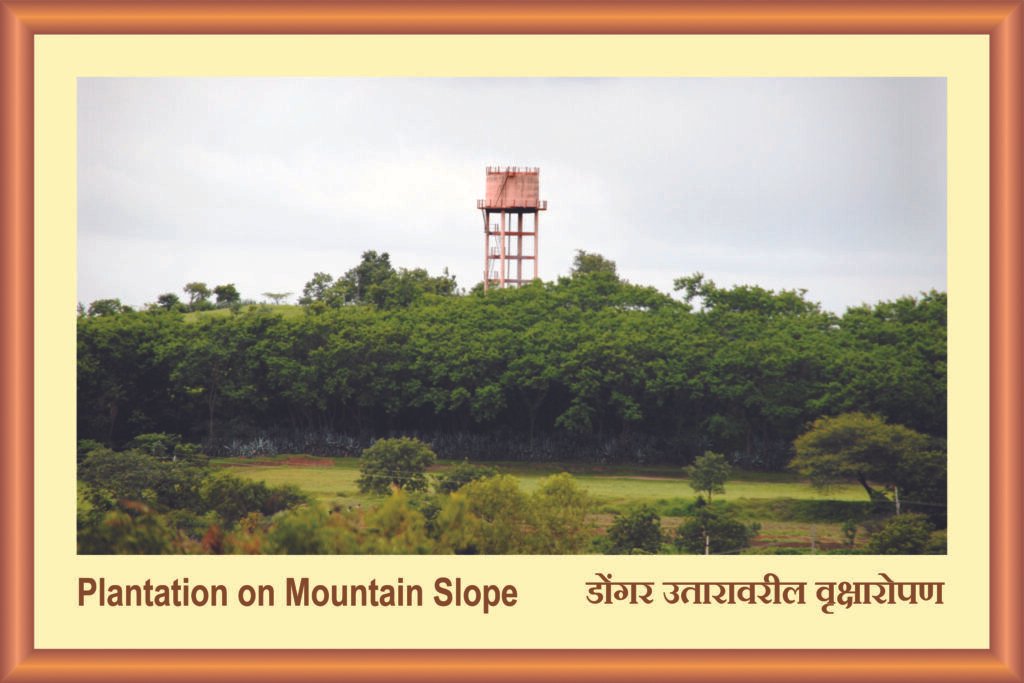

Continuous Contour Trenches
When rainwater falls on ground, it flows with great speed and carries the upper soil layer with flow. This downward flow can be stopped by CCT. In this water conservation technique, the trenches run along the contour of the land. When rainwater falls on area covered with CCT, trenches becomes a one-way valve where water can flow into it but not out. Hence, rainwater left only with option to percolate into the ground. To bring up more the ground water level and to control loss of water due to evaporation Ralegan adopted the same technique. For that, workers of watershed development program (WDP) have dug in the trenches along the contour of land Continuous Contour Trenches, on top side of village i.e. on hilly slopes, which ultimately provides enough water in village’s wells round the year. Also helped to control soil erosion in the area. In Ralegan Siddhi, around 142 hectares’ area is covered with CCT.
Road Side Plantation
Plant large evergreen trees in the outer row, followed by medium sized trees in the middle and flowering small trees, shrubs or bushes in the inner row on either side of the road. Highway planting should achieve a mass effect for the viewer traveling at the assigned speed of the highway. It should also achieve a well-balanced combination of both planted areas and open grassy spaces.
Purpose of highway planting is not only to provide shade but also to enhance the aesthetic value of the roads. Safety on highways, roads and streets is the important factor to contemplate when planning and designing for roadside plantations.


Greenary In Ralegan Sidhhi
Plants in offices purify the air: they reduce concentrations of CO2 and volatile organic compounds, keeping the air fresh and healthy. Greenery provides cooling by blocking solar radiation (i.e. providing shade) and aiding evaporation; a 10% increase in urban vegetation reduces the heat-island effect in the relevant zones by an average of 0.6 ºC.1. All forms of vegetation help remove particulates and other pollutants from the air. Gaseous contaminants are absorbed by leaves, and particulates are filtered passively
Staggered Trenches
To stop soil erosion and to protect fertile land by storing water and increasing land moisture percentage, trenches are made in staggered or discontinuous manner called Staggered Trenches. WDP Ralegan has also implemented this Staggered Trenches water conservation technique in the village to secure continuous water supply from ground water source to control soil erosion They have dug the pits of size 4 x 1 meters with capacity of 1200 liters of water on the hilly slopes of village which further helps in recharging ground water. In Ralegan Siddhi around 162 hectares area is covered with Staggered trenches.


Loose Boulder structure
Due to uneven surface and hilly nature of Ralegan Siddhi, during heavy rainfall water flows with bit high speed than in any other villages with flat topography and also carries the top fertile soil with flow i.e. causes soil erosion. To reduce surface runoff by reducing the speed of water flow so water gets time to infiltrate into soil to recharge aquifers and to trap the soil which flows with water in the same area, under WDP Ralegan has constructed 250 loose boulder structure in the village. Loose boulder structure is made from the available big stones in the area and mud to hold those stones together. These structures act as barricade to water flow hence helps to reduce the speed of water and does not allow the soil in flow to pass away.
Wild Life In Ralegan Sidhhi
Wildlife and wildlife habitat play a vital role in the ecological and biological processes that are essential to life itself. The functioning of the biosphere, and hence the maintenance and enhancement of human life, depends on countless interactions among plants, animals, and microorganisms. These ecological processes are essential for agriculture, forestry, fisheries, and other endeavours necessary to human life. They also help maintain environmental quality by degrading and otherwise removing some pollutants and by preventing waste accumulation. We can observe some species of animals around Ralegan Siddhi.

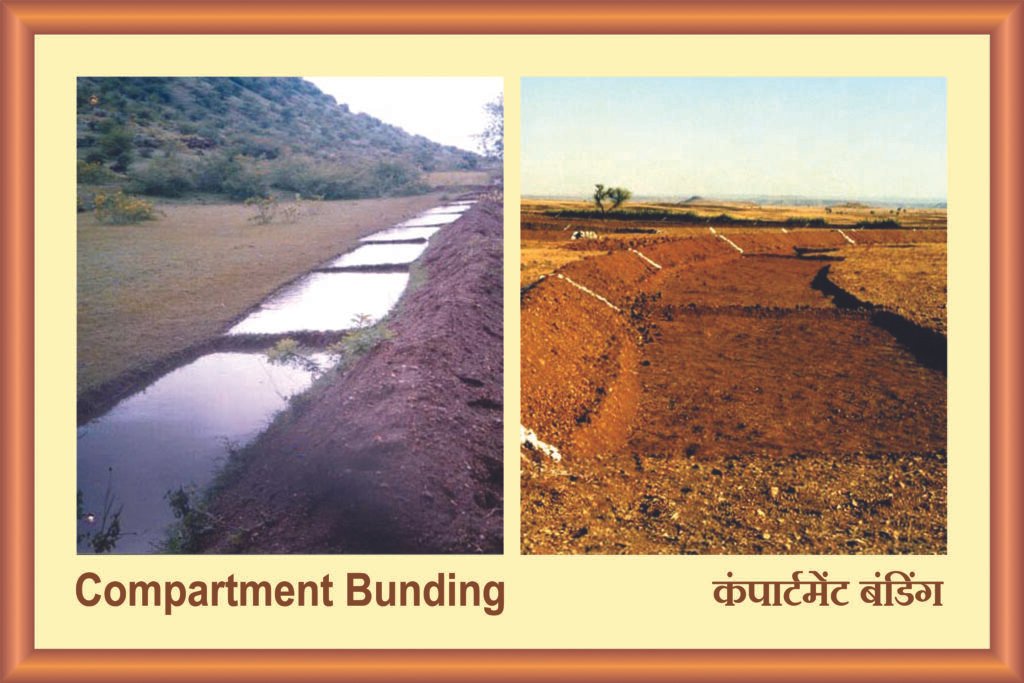
Compartment Bunding
Compartmental bunding means the entire field is divided into small compartments with pre determined size to retain the rain water where it falls and arrest soil erosion. The compartmental bunds are formed using bund former. The size of the bunds depends upon slope of the land. Compartmental bunds provide more opportunity time for water to infiltrate into the soil and help in conserving soil moisture.
Muddy Nala Bund
The Nulla Bunding you need to dig for the foundation till you reach a hard ground. While filling the foundation of the bunding it needed to be reinforced. For this, you need to lay two strips of soft rocks and a strip of black earth between them. These strips need to be watered and pressed hard with a heavy roller. Since this wasn’t done when the bund was complete, the water that had collected in the bunding seeped through the gravel and escaped. It didn’t get absorbed in the earth.
To other side, the flowing mud is getting accumulated in the dams through rivers & streams. The dams are gradually getting filled by this mud. The dams are going to die in the span of 200/300/400 years of time. When this day would arrive, neither the government nor mankind will be in position to remove this mud out of these dams. If such program is executed scientifically in every village, then it has potential to provide employment to the population in the village & fulfill the daily need of food.
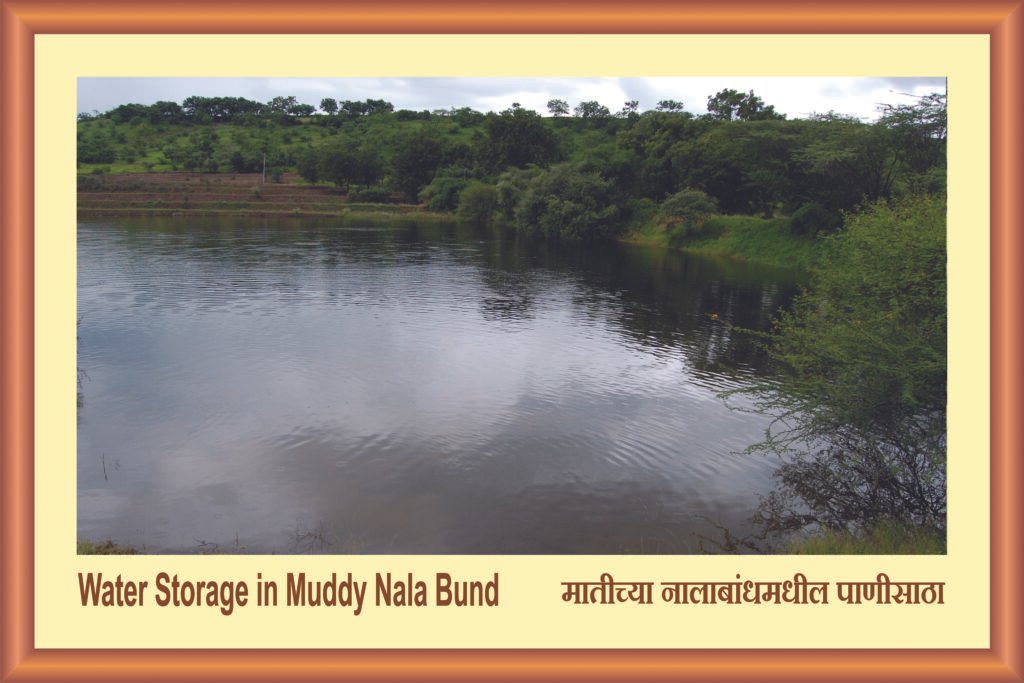
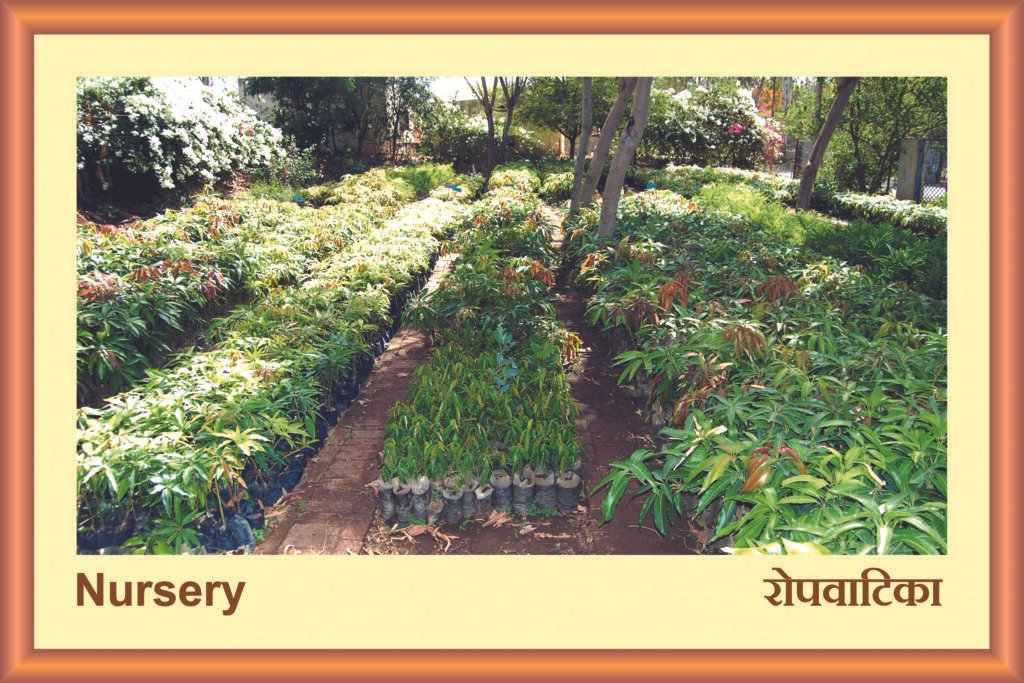
NURSERY
Gardening has turned from more than a hobby to a career for most. Once you buy your first plant you will unconsciously be attracted to maintain more of these luscious little life as it will bring out the nurturing side of every person. Plant nurseries involves the nurturing of these young samplings in bulk to be sold later for retail purposes. Here are a few reasons to dig a little deeper and build your own plant nursery. Plant nurseries not only help feed the gardener instincts within one, but can also be potentially leveraged for commercial purpose.

Percolation Tank
A large number of percolation tank projects were undertaken during the drought of 1972 but their foundations weren’t dug till they reached the hard ground and the filling too wasn’t done as per the method In such a case, the tanks dry up within a couple of months after the rainy season is over.
Dugout Sunken Pond
Dugout Ponds are excavated at the site and the soil obtained by excavation is formed as embankment around the pond. The pond could either be fed by surface runoff or groundwater wherever aquifers are available. In case of dugout ponds, if the stored water is to be used for irrigation, the water has to be pumped out.
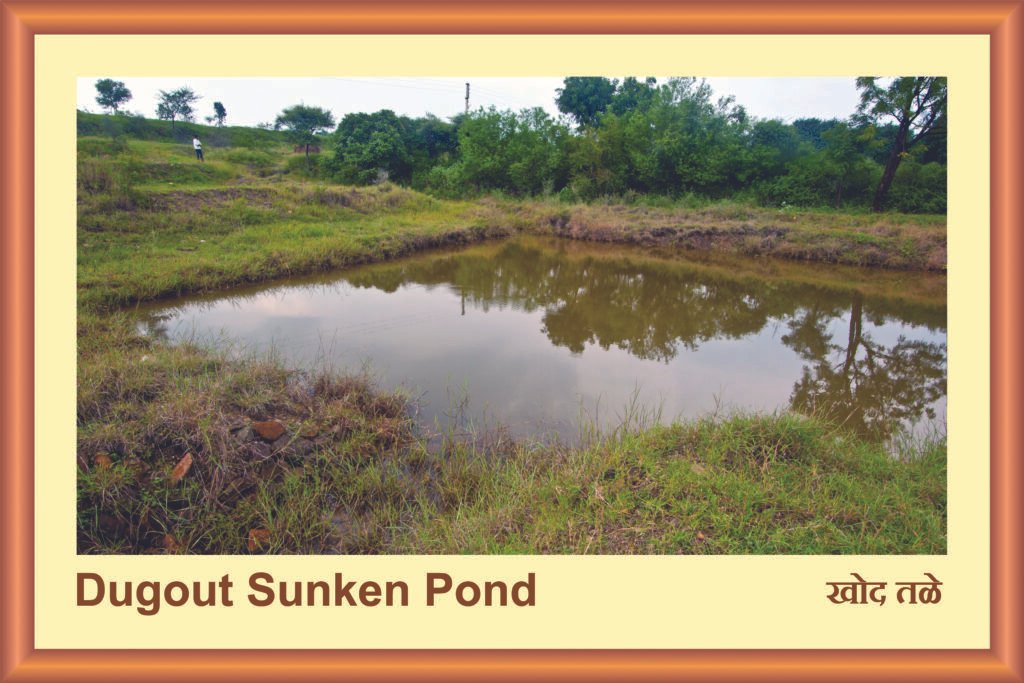
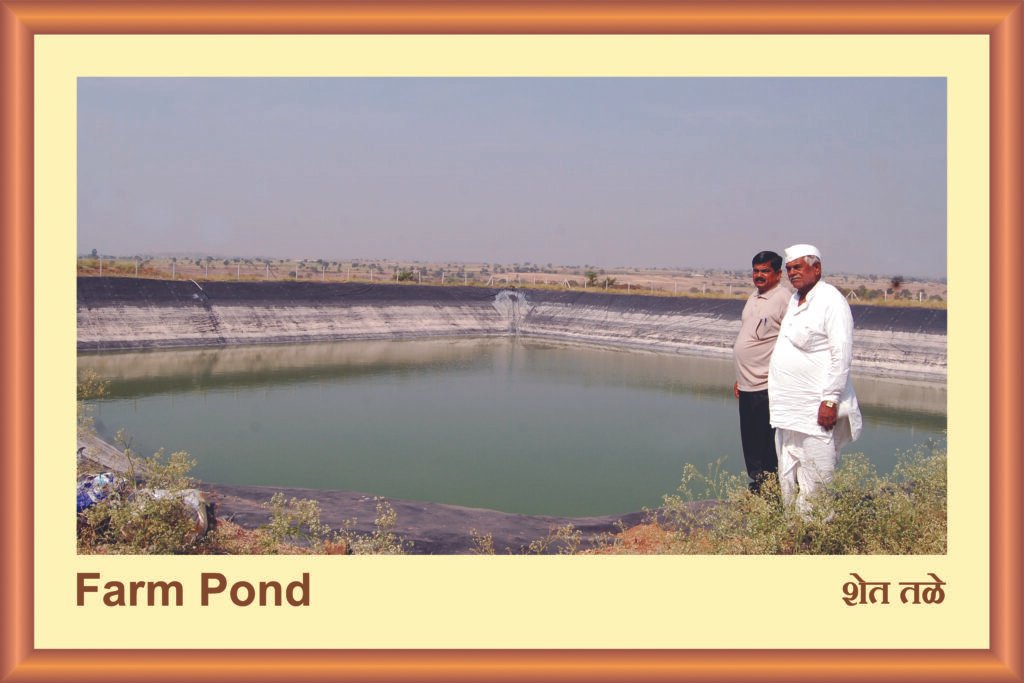
Farm Pond
During rainy season to store excess surface runoff from farm land and rain water locally for future use, farm pond of capacity 2500 million litres are very common in Ralegan. One of the WDP coordinator has confirmed that around 15 farm ponds are there in village and fund to build those were borrowed by respective owner of the farm from governmental bank. As Ralegan is located in drought prone area, rain pattern and intensity changes frequently. Water from farm pond helps to start growing the crops and to handle this
Uncertainty of nature. A farmer aged 50 and owns 24 acres of farm land in Ralegan Siddhi, said in his interview that “farm pond gives us mental satisfaction because we see the water is there for irrigation in case of delayed rain and we pumped the water from the farm pond as per our need of irrigation.”
Gabian Bandhara
Gabion Bund which provides the same functions such as helps in soil conservation and recharging aquifers like Loose Boulder Structure are also seen in Ralegan Siddhi’s Nalla Bund (open drains) 16 Gabion bund are there in the village. The construction of Gabion bund is simple, less expensive and need relative less time to build. For this, stones are wrapped in steel wire mesh and placed in Nalla bund to hold water so that water infiltrates into the earth and to trap the top soil, which comes with water flow.
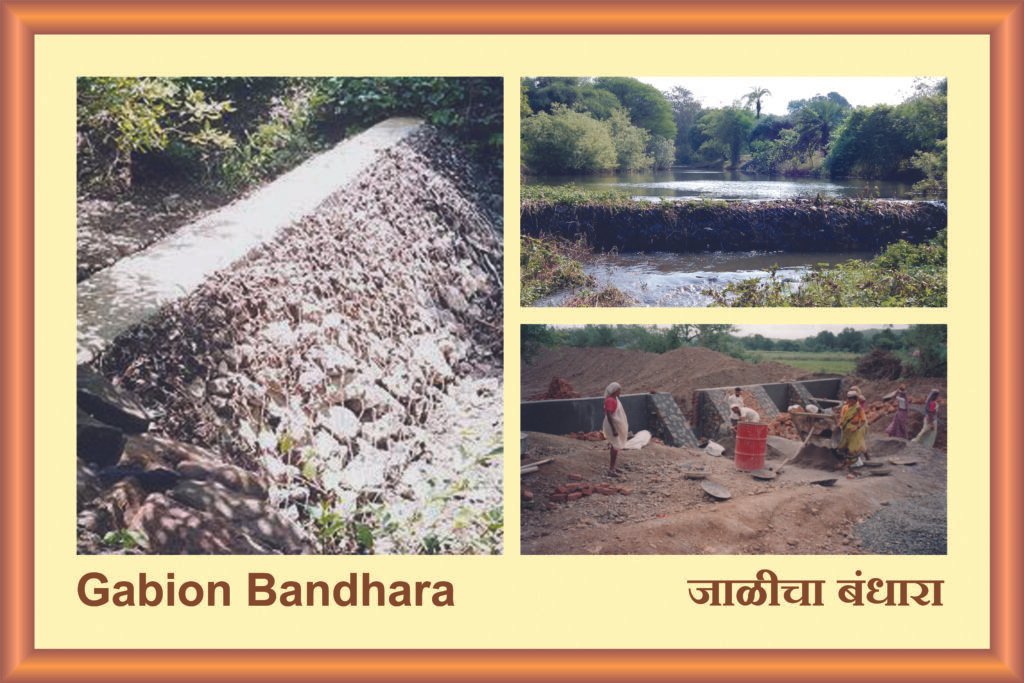

Cement Nala Bandh
The rain water in the villages is carrying the to soil along with it to some or other big dam. We need to arrest this in the village itself &Water storage program alone has the capacity to do so.
The back water of these dams is spread up to 60/70/80 km, area. If we try to do this impossible task of removing mud out of dams, would create a hill of 250/300 mt. high, Nor we would be able to construct new dams, as there won’t be any site remaining to do so. Due to these dams the need of drinking water is satisfied, sugar & other industries with electricity projects are working on them. What would happen to all these when the dams are filled with mud?
This program works on the top thoughts of top to bottom of the area.
The higher area are cultivated with grass of allowed to grow trees. Constuctions of loose boulders, CCT Trenches, Nulla Bunds, Cement Bunds, Gabian Bunds Percolation Ponds arrested both Flowing muds and rain water in the village self.
The water storage structure program has raised the level of underground water.
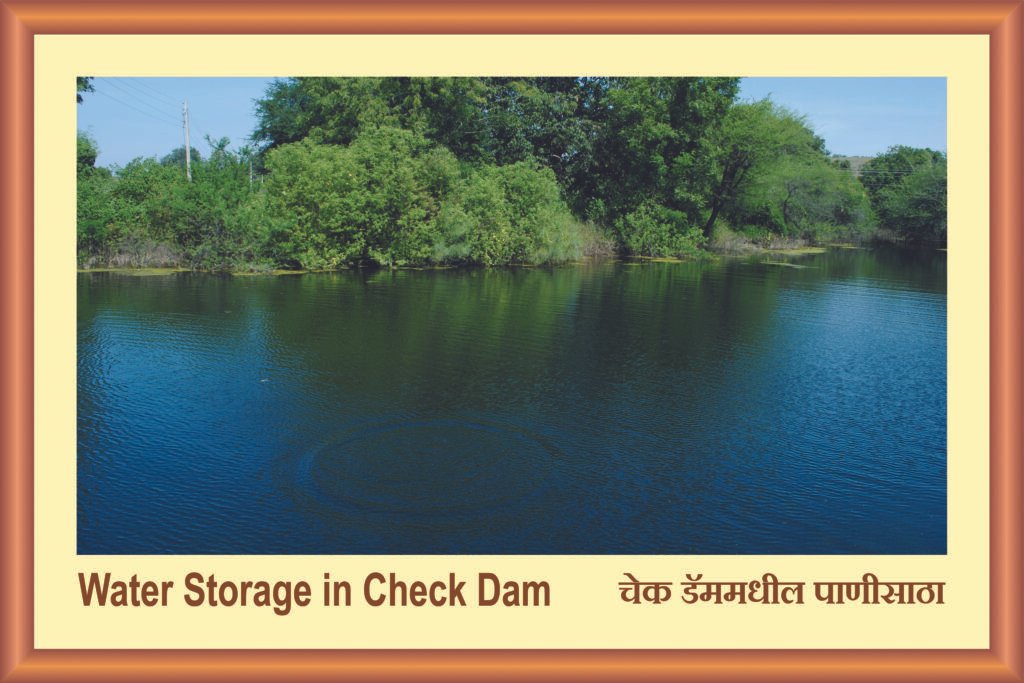
Water Storage in Check Dam
We are now planning to install a water meter near the pipeline from the canal. It would help us know how much of the canal water was used by Ralegan Siddhi.
Water storage in chain Bunds
Chain Bunds incorporate drainage features and filters to control seepage and prevent internal erosion. These may include horizontal or vertical drains, filters made of graded materials, and cutoffs or seepage control measures to minimize water flow through the dam.

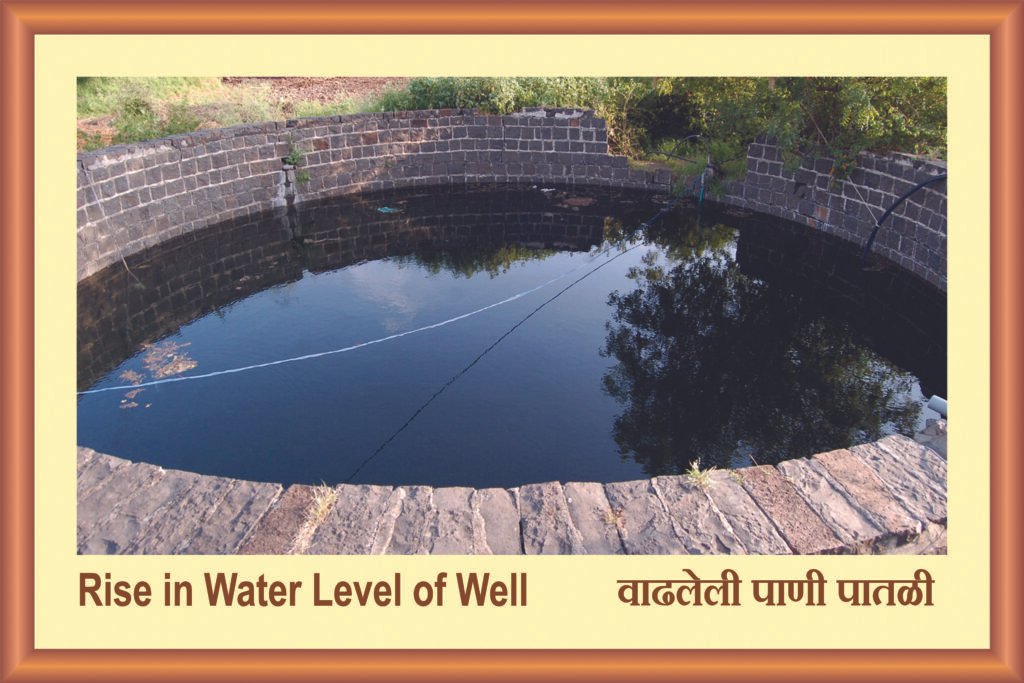
Rise in Water level of well
The percolation tank would raise the water table; hence, constructing wells along the flow was the next logical step for utilising the water. However, 80 percent of the farmers could not dig their own wells owing to financial constraints. Anna thus started the concept of ‘cooperative societies’. He mobilised 16 poor farmers holding contiguous plots and got them to dig a community well that would irrigate 35 acres of land. Of the cost, 50 percent was met through shramdan and Anna Hazare borrowed the remaining 50 percent. Construction of the well led to regular water supply for irrigation. Over the next two years, seven community wells were constructed on a cooperative basis. Irrigation came to 700-800 acres of land. Thanks to the percolation tank, the wells on the downstream side were recharged and water was available even during the summer season. Prior to this, only one crop had been possible as land was essentially rain fed. After the well was dug, two crops were possible. There was a fivefold increase in yield. The largest well constructed so far is 70 feet deep, and irrigates 125 acres belonging to 26 farmers.
Flowing Water Without Pump

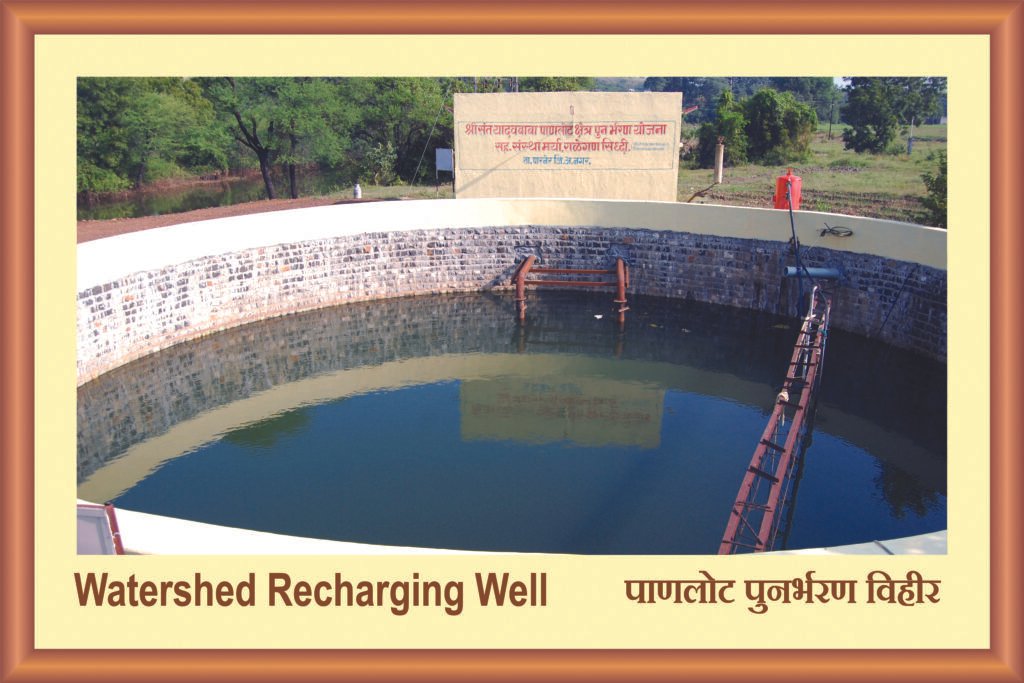
Watershed Recharging Well
The wells dug for supplying water to agriculture and that’s why All the farmers work twelve months of the year in their farming and The problem in livelihood has come to an end permanent.